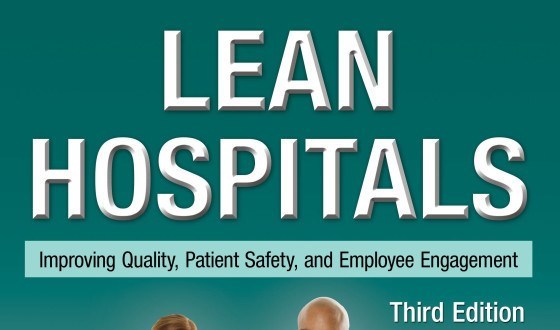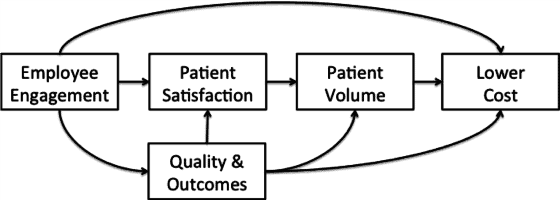Later today and tomorrow, I'll be attending the annual World Patient Safety, Science & Technology Summit that's produced by a non-profit called the Patient Safety Movement. If you're also at the event, please say hi! Follow the event on the hashtag #0X2020.
I attended last year and wrote a post titled “Politicians and Patient Safety: Bill Clinton, Joe Biden, and More” that included video of Clinton and Biden. I also saw a talk by Dr. Erin DuPree, from the Joint Commission Center for Transforming Healthcare, which led to my podcast interview with her.
I'll be there, again, as a guest of the Louise Batz Patient Safety Foundation, where I'm proud to be a board member. They have a brand new website that looks great, by the way. I highly recommend their publication, The Batz Guide, which is available as a book, a free PDF, or a free iPad app. I gave a book to a friend who had surgery last year and she found it incredibly helpful. If your hospital or health system would like to partner with the Batz Foundation to bring these guides to your patients, please contact them.
I've said, all in seriousness, that I care about improving patient safety more than I care about organizations embracing Lean.
To me, patient safety is a major problem statement. See the statistics about how bad this problem is around the world.
In my podcast series, I've interviewed two parents who each tragically lost a child due to preventable problems in hospitals:
- Sorrel King (talking about her daugher, Josie) – Listen
- Chris Jerry (talking about his daughter, Emily) – Part 1 and Part 2
Also see this powerful reflection from Virginia Mason Medical Center about a preventable patient death (Mary McClinton) and what they've done since to improve safety with Lean
"We still have very serious quality problems" -Dr. Mark Chassin, CEO, #JointCommission. #patientsafety #0X2020https://t.co/OBFb9xjiIU
— Patient Safety Movement Foundation (@PLAN4ZERO) January 22, 2016
Twitter can be source of #PatientSafety data, incl type of care, error, result. #0X2020 https://t.co/sSYNxe3Nk1 pic.twitter.com/2YjgWjwuPF
— R. Adams Dudley (@RAdamsDudleyMD) January 18, 2016
Lean is a countermeasure for the patient safety crisis, a solution, a strategy… a means to an ends. What really matters is improving healthcare… reducing harm… saving lives. The financial cost is huge. The human cost is incalculable.
There's many reasons why the subtitle of my book Lean Hospitals is “Improving Quality, Patient Safety, and Employee Engagement” (3rd edition coming soon).
In the Lean mindset, I was taught that the key priorities for an organization were SQDCM – safety, quality, delivery (think of this as patient access), cost, and morale. If this could be true in the automotive industry, it can be true in healthcare.
“Safety first” is not just a slogan for Toyota and great Lean organizations. Safety is not a program or a department. It's a top priority… a non-negotiable. Listen to my podcast with Paul O'Neill about the role of executive leadership in improving safety. Powerful stuff.
“Zero harm” is a commonly stated goal in healthcare and the patient safety movement. That's also the goal, zero employee harm, at companies like Alcoa (where O'Neill was CEO) and Toyota.
The Lean philosophy, as with the patient safety movement, realizes that most problems and errors and defects are not caused by “bad apples” or individuals. We don't blame individuals for systemic problems – or jail them. As Dr. W. Edwards Deming taught, most problems are caused by bad systems and processes. Improving safety requires culture change and leadership. Safety isn't improved with signs and buttons.
Lean also emphasizes error proofing (or mistake proofing) as a way of systemically reducing harm (protecting patients) and protecting good employees from being involved in errors (and being blamed). See my posts about this. Error proofing is an idea that traces back to the very early days of Toyota.
Checklists are also a very good form of mistake proofing (and an example of “standardized work“).
Deming was hugely influential on Toyota. Deming was also a huge influence on the leaders of the modern patient safety movement, including Don Berwick, Paul Batalden, and Lucian Leape. “Dr. Don Berwick is “Stunned” By How Few Organizations Study Deming,” by the way.
If Deming heavily influenced Lean… and the patient safety movement… Lean and patient safety are very similar movements and approaches. Berwick once said “Lean and patient-centeredness are one and the same” and that could extend to Lean and patient safety. I thought this was pretty well accepted, so it surprises me when some doctors say that Lean is not appropriate for healthcare. Lean methods are transferrable to healthcare — there's too much evidence at this point that demonstrates that.
Lean is a structured approach to solving problems by engaging staff in a scientific way. Lean isn't just a better system for building cars. Lean engages people to work together to improve safety and patient care. Higher engagement leads to results as shown in this diagram from our Executive Guide to Healthcare Kaizen, where patient safety is included in “quality and outcomes.”
Lean isn't about cost-cutting… lower cost is the result of better quality and safety… which is true in a car factory or a hospital. It's possible to improve quality and cost at the same time, with Lean methods.
The foreword of The Executive Guide to Healthcare Kaizen was written by Dr. Gary Kaplan, the CEO of Virginia Mason Medical Center. VMMC was named a “hospital of the decade” by Leapfrog Group, a leading patient safety advocacy group.
Next week, I'm releasing a new podcast episode where I interview Leah Binder, president and CEO of Leapfrog Group. I first met her, also, at last year's Patient Safety Movement event.
Lean is also a philosophy and a management system, as explained by Toyota and practiced by VMMC.
Again, Lean isn't about cars… it's about people. VMMC learning from Toyota doesn't turn their hospital into a factory. It doesn't mean treating patients like widgets or rushing them through the exam room. It means freeing up time for better patient care, more caring care.
There's great overlap between Lean principles and methods and the beliefs of the patient safety movement. The Institute for Healthcare Improvement endorses Lean methods.
I had a chance last year to do a podcast with interview Dr. Bob Wachter, author of books including Understanding Patient Safety. He had earlier interviewed me about Lean.
Lean also has a lot that's conceptually aligned with safety practices from aviation, including “Crew Resource Management.” Listen to me interview an airline pilot about these approaches and the overlap with Lean.
There are many examples of health systems using Lean methods and a Lean culture to improve quality and safety in measurable ways. See some stats and examples here.
I'd love to hear your comments and stories about Lean and patient safety. Leave a comment below if you can tell us about how Lean has helped and what challenges you still face. I'd love it if you can post links to your favorite case studies or stories about Lean and patient safety. Everyone who's working on this… keep up the great work.
I'll be blogging and tweeting about the Summit too. We're all in this together, this incredibly important fight to improve patient safety.
See more posts on patient safety.
Please scroll down (or click) to post a comment. Connect with me on LinkedIn.
Let’s work together to build a culture of continuous improvement and psychological safety. If you're a leader looking to create lasting change—not just projects—I help organizations:
- Engage people at all levels in sustainable improvement
- Shift from fear of mistakes to learning from them
- Apply Lean thinking in practical, people-centered ways
Interested in coaching or a keynote talk? Let’s start a conversation.











![When Was the Last Time a Leader Around You Admitted They Were Wrong? [Poll]](https://www.leanblog.org/wp-content/uploads/2025/07/Lean-Blog-Post-Cover-Image-2025-07-01T212509.843-100x75.jpg)